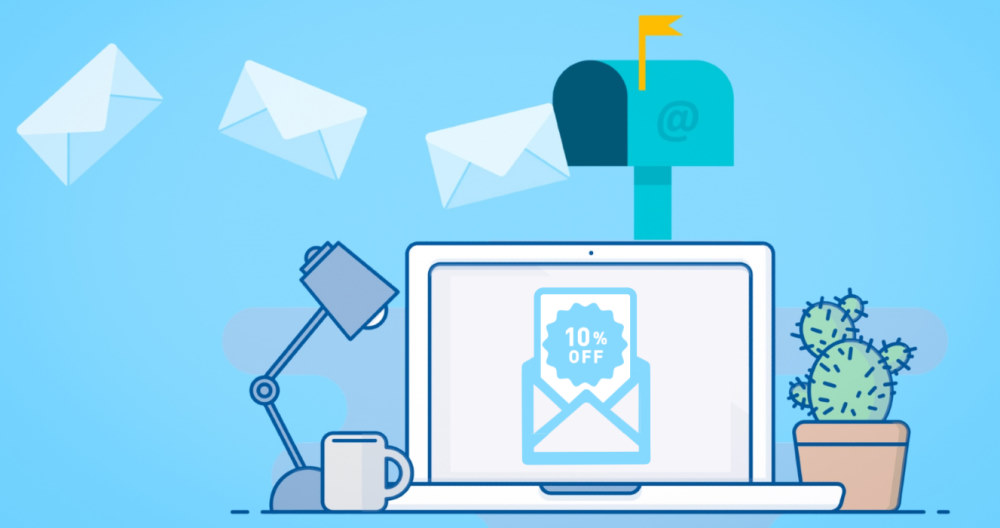Maximize the Success of Your Email Campaigns Part 2
Our recent article on maximizing your email campaigns provided some tips and tricks for creating email lists. Once you’ve built a top-notch list of email addresses, you’re ready to start creating email campaigns. To help give you a few ideas, we’ve compiled a list of tips for creating successful email campaigns.
1. Use responsive design
Campaign Monitor notes that 53% of emails are opened on mobile devices. This means that if your emails don’t look good on a mobile device, you’re starting at a disadvantage. Responsive design is the best way to ensure that your emails adjust to the device’s screen size on which it is opened. If you’re looking for a simple way to create responsive campaigns, email marketing platforms like SendInBlue and Constant Contact offer this functionality right out of the box.
2. Keep your subject lines short
SendGrid’s Study analyzing the engagement rates of email subject lines revealed a definitive answer: keep your subject line short. Three-word subject lines have been shown to be ideal, increasing engagement by 25% when compared to the most common subject line length (seven words). Once you’ve hit fifteen characters, each additional character decreases your engagement rate by an average of 0.03%.
3. Keep your emails concise
Your readers are often checking their emails in the middle of a busy day. If you don’t get your point across quickly, you may lose their attention to another task. Lyfe Marketing helps businesses increase the success of their email marketing by keeping email content to a few sentences. If more information needs to be conveyed, they encourage the use of bullet points.
4. Create a clear Call-To-Action
Determine exactly what you want your customers to do after reading your email, and make it easy for customers to do it. Campaign Monitor suggests using a prominent button for the job. Increased size, a unique colour (different from the background and other text colours), and whitespace around the button all lead to increased click-through. Also consider personalizing your Call-To-Action, as it is linked with dramatically increased click-through rates. In a study of 330,000 Calls to Action, Jerry Vocell of Hubspot found that personalized Calls To Action got more than double the click-through rate of CTAs that were generalized.
5. Personalize your Emails
Remember how we talked about segmenting your email list in part 1 of this series? Now you can start to reap the benefits of that extra effort by enjoying higher read and click-through rates for your email campaigns.
Rather than sending the same email to every customer, personalize your email content by promoting information to specific categories of customers. For example, if you sell men’s and lady’s wear, you might send an email about a new dress line to your female customers; whereas an email campaign introducing a new line of men’s jeans will have more impact if they are sent only to your male customers.
In a world saturated with email marketing, personalized emails will help your business capture your reader’s attention. Experian, a global provider of consumer insights and targeting data, found that personalized promotional emails have a 29 percent higher open rate and 41 percent higher click-through rate. It may seem like more work to segment your contact list, but there’s a lot of proof that it’s worth the effort.
Another note on personalizing emails: most email marketing platforms charge based on the total number of emails sent during a period of time (usually a month). If you have a large list of email addresses, then it makes good financial sense to personalize emails. Why pay for emails being sent to people who will never read them?
6. Stay out of the spam filter
There’s nothing worse than investing your resources into building a contact list and creating stunning email campaigns only to have them sent straight to the junk folder. Ensure that you are sending emails from a recognizable email address, emailing only people who have given you their permission, and you stay away from spam trigger words. If you’re still unsure whether or not your emails seem spammy, try out an email testing tool to test campaigns for spam triggers before you hit send.
Creating impactful email campaigns is not an exact science. But if you keep working at it, after a while, you’ll get a sense of what works and what doesn’t. Hopefully, some of these tips will help you come up with powerful email campaigns, and Calls to Action, that engage your customers and keep them coming back again and again.

